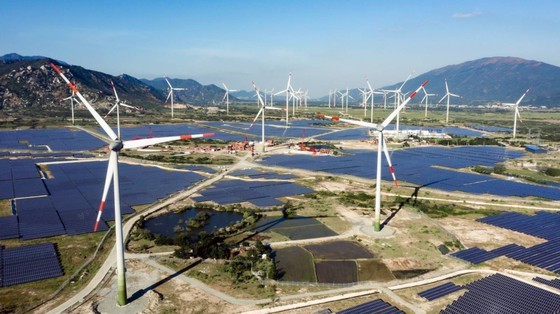 Illustrative photo: SGGP
Illustrative photo: SGGP
According to the tech news website, Vietnam recognises that the transition to green energy has never been more urgent. As one of the fastest-growing economies in Southeast Asia, the country has demonstrated its seriousness in pursuing the green energy transition especially when it comes to embracing solar power.
The article cited a World Bank’s report that said Vietnam now boasts the highest installed capacity of solar power in Southeast Asia, generating 16,500MW at the end of 2020. Separate statistics by the International Renewable Energy Agency (IRENA), showed that Vietnam, as of the end of 2020, was within the top 10 countries in the world with the highest capacity of solar energy installed.
The article said considering the country’s high solar PV potential and its ambitious green energy goals come 2050, Vietnam has all the means to become a regional and global leader in renewables. It added that there is also a strong case for wind power projects as well, considering that the country has one of the best wind resources in Southeast Asia, with an estimated potential of 311 GWs.
Market experts reckoned if Vietnam retains its lightning pace of renewable energy expansion from the last two years, it will further climb the ranking, potentially surpassing countries like Australia and Italy in renewable energy development and innovative energy solutions, according to the article.
It was of the view that the Vietnamese Government's commitment to boosting energy supply and strong public demand for improved air quality has been important underlying drivers in this direction. Well-designed and executed supporting regulations and policies such as feed-in-tariffs (FiT), tax incentives, and waiver of land lease are also considered the underlying factors driving renewable energy growth, especially solar, in the country.
The global consultancy company McKinsey said while Vietnam’s current energy plan is ambitious, it can become better. It concluded that a renewables-led pathway can unlock a plethora of opportunities for the country, including saving 10 percent of overall power costs, cutting down 1.1 GTs fewer greenhouse gas emissions, and others.
























